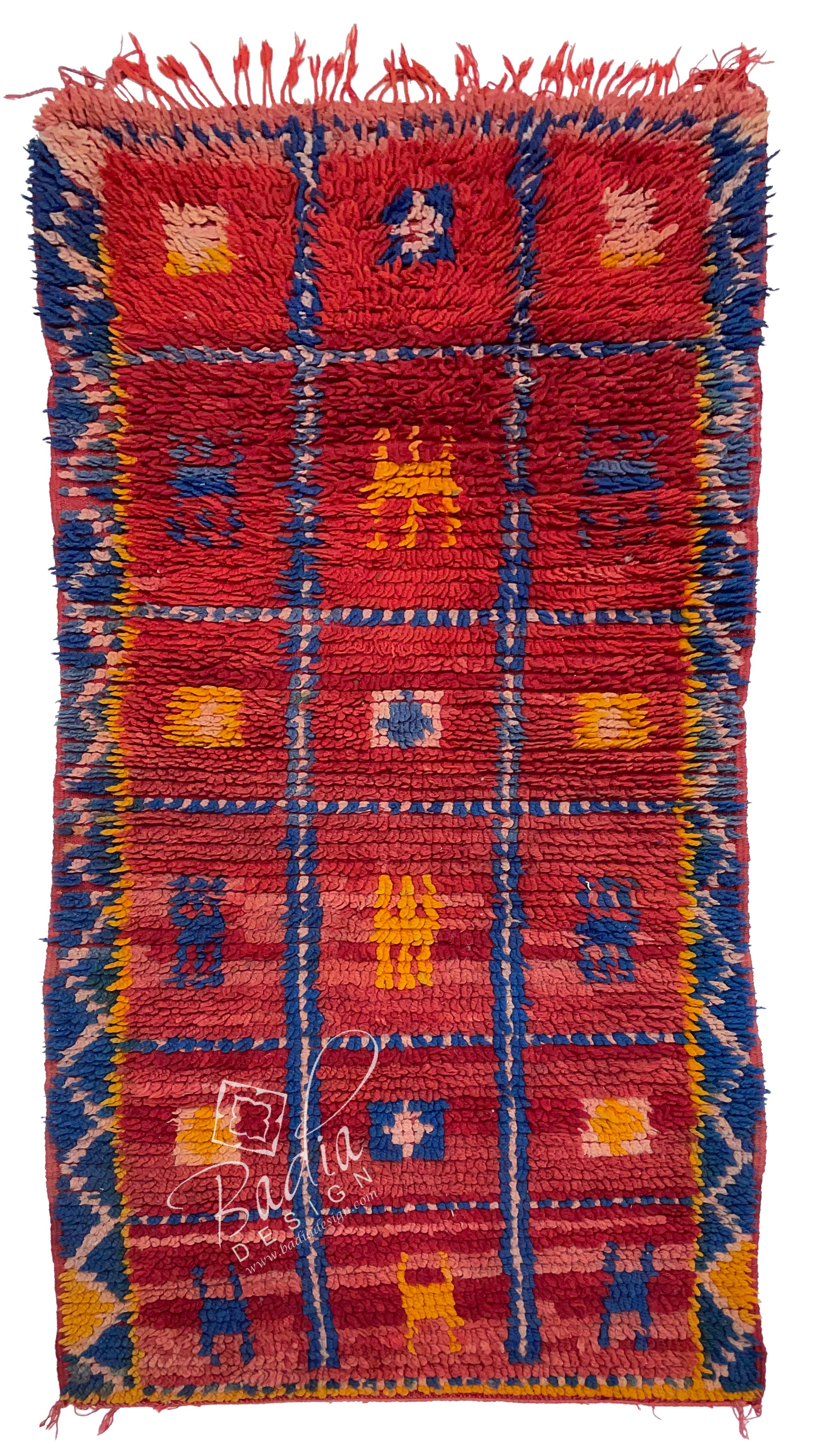Berber Kilim Rugs
Berber Kilim Rugs
Blog Article
Moroccan Berber Rugs: A Blend of History, Craftsmanship, and Timeless Style
Moroccan Berber Rugs have captivated residents and businesses worldwide with their rich history, meticulous artistry, and incomparable adaptability. These rugs can enhance any space, from a welcoming lounge to an elegant hotel suite. In this article, we’ll explore the fascinating history of Moroccan Berber rugs, the detailed artistry involved in their production, their renowned durability, and practical tips for styling them in modern spaces.
These rugs originated with the ancient Berber people of North Africa, dating back centuries. The Berbers, with their rich cultural heritage, crafted unique weaving methods as a practical response of their migratory way of life and diverse climates.
Each Berber rug tells a story, often woven into the fabric that reflect the heritage of its creators. Motifs often symbolize themes like protection, nature, or fertility, giving each rug a profound heritage. Originally, these rugs were crafted for utilitarian purposes, such as providing warmth during harsh winters in the Atlas Mountains or acting as soft bedding in arid desert regions.
In the mid-20th century, Moroccan Berber rugs gained global popularity when renowned visionaries like Le Corbusier and Frank Lloyd Wright featured them in their iconic designs. Now, these rugs are prized for their beauty and rich tradition.
The production of Moroccan Berber rugs is an elaborate read more art form handed down through generations. This craftsmanship embodies a deep connection to heritage and artistry.
Berber rugs are typically crafted from eco-friendly fibers such as pure wool, camel hair, or even cotton. Wool stands out for being soft, strong, as well as for its thermal qualities. The wool is usually spun by hand, resulting in a one-of-a-kind finish.
Berber rugs are handwoven on traditional looms, a process that can take weeks or even months depending on the size and complexity of the design. The knots—whether Beni Ourain’s loose and shaggy texture or the tighter weave of Azilal rugs—define the rug’s durability and appearance.
Artisans rely on natural dyes from the environment to achieve the vivid tones seen in Berber rugs. Earthy tones such as beige, cream, and brown are common in Beni Ourain rugs, while Azilal and Boucherouite rugs showcase bolder colors like reds, blues, and yellows.
One of the most celebrated features of Moroccan Berber rugs is their exceptional durability. As a result, they’re an excellent fit for homes and work environments.
The use of premium materials ensures that Berber rugs hold up over years of use. Wool’s natural flexibility and resistance to stains make it a ideal choice for lasting rugs.
Cleaning and maintaining a Moroccan Berber rug is relatively simple. Routine vacuuming and periodic professional care can preserve their beauty for decades.
Styling Moroccan Berber Rugs in Contemporary Interiors
Adding Moroccan Berber rugs to modern spaces is simpler than it seems. These rugs' adaptability allows them to suit various aesthetics, including minimalist and bohemian styles.
1. Create a Focal Point in the Living Room
A large Beni Ourain rug can serve as the focal point of your living area. Its neutral colors and simple geometric patterns can tie together various design elements while adding a sense of warmth and comfort.
2. Introduce Vibrancy to Minimalist Rooms
In minimalist or neutral spaces, a colorful Azilal or Boucherouite rug can add a bold, eye-catching accent. These rugs work particularly well in neutral-toned rooms, where they serve as a focal point.
3. Combine Rugs for Depth and Style
To create a warm, layered look, place a smaller Berber rug atop a larger rug made from natural fibers like jute or sisal. This combination not only adds depth and texture but also highlights the intricate details of the Berber design.
4. Enhance Workspace Aesthetics
Moroccan Berber rugs are perfect for adding elegance and warmth to professional spaces, including offices and lounges. Their handmade quality conveys a sense of luxury and authenticity.
5. Use as Wall Art
Some Moroccan Berber rugs are so visually stunning that they deserve to be displayed as art. Displaying a Berber rug on a wall highlights its intricate design and cultural significance.
The Value of Moroccan Berber Rugs
Moroccan Berber rugs combine functionality, beauty, and cultural depth, making them a valuable choice for homes and businesses alike. These rugs are built to last, and their classic designs remain relevant despite evolving decor trends.
Eco-Friendly and Ethical Craftsmanship
Many Berber rugs are crafted using eco-friendly and sustainable practices. Purchasing these rugs helps preserve artisan traditions while enriching your decor with sustainable beauty.
Why Berber Rugs Gain Value Over Time
Vintage or unique Moroccan Berber rugs tend to grow in worth over the years. They are both functional decor and collectible assets.
 Report this page
Report this page